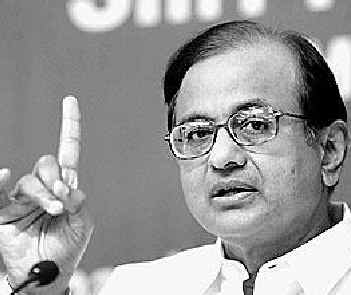Red shadow is lengthening
 The beheading of Francis Induwar, a policeman, in Jharkhand earlier this week was horrific. Home Minister P. Chidambaram has repeatedly termed this killing of a captive by Maoist rebels a cold-blooded murder.
The beheading of Francis Induwar, a policeman, in Jharkhand earlier this week was horrific. Home Minister P. Chidambaram has repeatedly termed this killing of a captive by Maoist rebels a cold-blooded murder.
Security officials have been quick to seize moral high ground. And, except a few security analysts, the remainder has contributed to this public relations charade.
The truth is: it’s a war out there. Both Maoist rebels, and police and paramilitary continue to conduct it without compunction.
Maoists see India’s political structure as deeply corrupt — proven conventional wisdom. While the government accuses Maoists of being anti-development, Maoists in turn claim they want a different, more inclusive development, and accuse the government of usurping land in tribal and rural homelands to assure businesses mining concessions, or forcefully award them land to set up factories and economic zones.
Rebels take heart from an idea of Mao Zedong. A revolution is not “a dinner party … or doing embroidery; it cannot be so refined … kind, courteous, restrained and magnanimous,” Mao wrote in The Question of ‘Going Too Far’, Report on an investigation of the peasant movement in Hunan. “(It is) an act of violence by which one class overthrows another.” Also, that “it is necessary to create terror for a while” to “suppress the activities of the counter-revolutionaries” or “overthrow the authority of the gentry”.
A key proponent of the derivative Naxalbari movement, Charu Mazumdar, said at the May 1970 Congress of Communist Party of India (Marxist-Leninist), in Calcutta that “only by waging class struggle — the battle of annihilation —the new man will be created …” This led to great blood-letting in parts of eastern and southern India. ‘Naxals’ attacked and killed landlords, moneylenders and politicians in rural areas, and soon took their war to the police and other symbols of government authority in cities. If they were vicious, so were the police and their political masters, leading to massacres in Calcutta, for instance, of rebels and innocents. The practice of torture, custodial death and faked encounters became more entrenched.
The current phase of leftwing rebellion in India, led by Communist Party of India (Maoist), is carrying on a more planned movement than their peers of the late 1960s and early 1970s — a fact readily agreed to by former and serving police and intelligence officials. It’s a deliberate mix of rural and urban. While the People’s Liberation Guerrilla Army fights in the states of Chhattisgarh, Jharkhand, Bihar, Orissa, Andhra Pradesh, Maharashtra and West Bengal — and is attempting to expand operations in Karnataka and Tamil Nadu —city-based ideologues channel recruits and logistics for both underground operations and ‘over ground’ activities through front organisations.
And, besides the usual business of battle — we seem to forget that combat kills people — each side has taken extra care to destroy and demoralise the other.
At their feared ‘People’s Courts’, Maoists harshly treat suspected traitors, police informers, and the police involved in intelligence activities — like Induwar. Heads, and sometimes limbs, are cut off. Rebels have left behind booby-trapped corpses of police and paramilitary, and so, have killed more.
In Chhattisgarh, central paramilitary, state police and state-abetted vigilantes — of Salwa Judum — have burnt homes to make a point. Women have been raped and killed. I came across an instance in Bijapur of forces bulldozing a suspected Maoist sympathiser and his preteen son. They beat the man, stabbed him, gouged out his eyes, cut open his chest, cut off his limbs, and smashed his head. His wife and two smaller children were made to watch. Of the older boy there’s been no news since that day in October 2005.
I have seen the result of forced resettlement of tribals. A former chief of the Bijapur police district gave orders to shoot and kill journalists in his area at the peak of the Salwa Judum drive that began in mid-2005. In February 2007, I heard Chhattisgarh’s Chief Minister Raman Singh boast to a room full of police and intelligence officials: “Salwa Judum is showing Gandhi is alive, showing non-violence is alive.” He smoothly added: “Salwa Judum is like the fragrance of the forest in summer.”
Torture, custodial deaths and faked encounters of captured rebels and those suspected of helping them are recorded across Maoist-affected states. It breeds a terrible loop of action and reaction. Operations every week lead to rebel deaths, arrests or surrender. Collateral damage — innocent people — are part of the deal. For their part, Maoists have heightened the call to arms after a meeting of its politburo in July this year. A document urged stepping up “tactical counter-offensives” and spreading these to “new areas so as to divert a section of the enemy forces from attacking our guerrilla bases and organs of political power”.
It’s a war that India has sired and festered, and helped to evolve and grow. The key triggers for revolt — skewed development, corruption, and social discrimination — show few signs of lessening. And so, brutality on behalf of different perceptions of the greater common good will get worse.
Sudeep Chakravarti writes on issues of conflict in South Asia. He is the author of Red Sun: Travels in Naxalite Country.